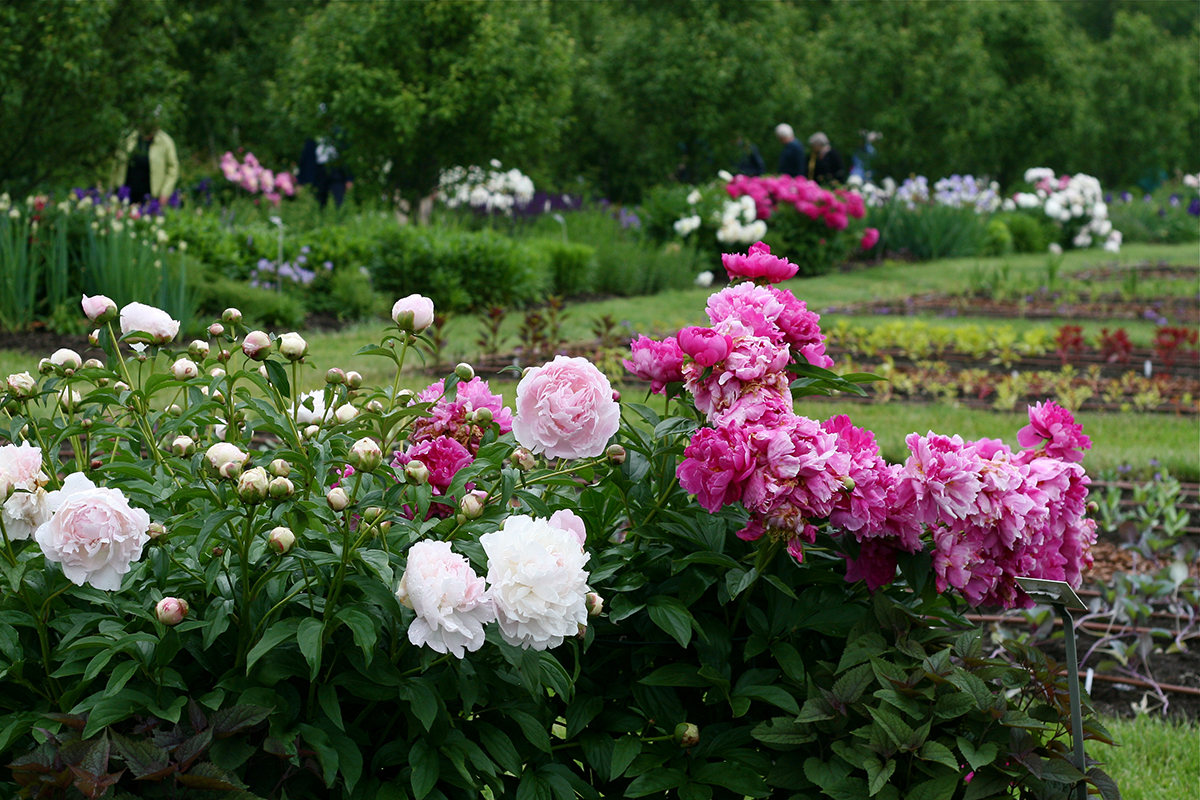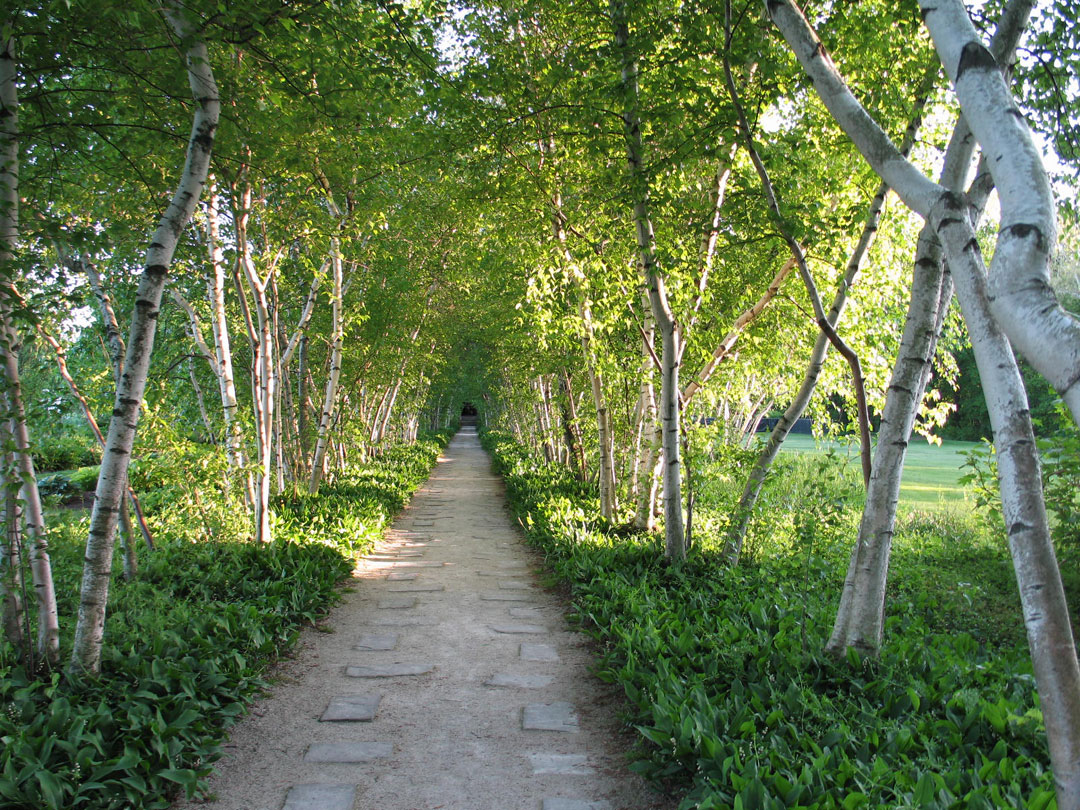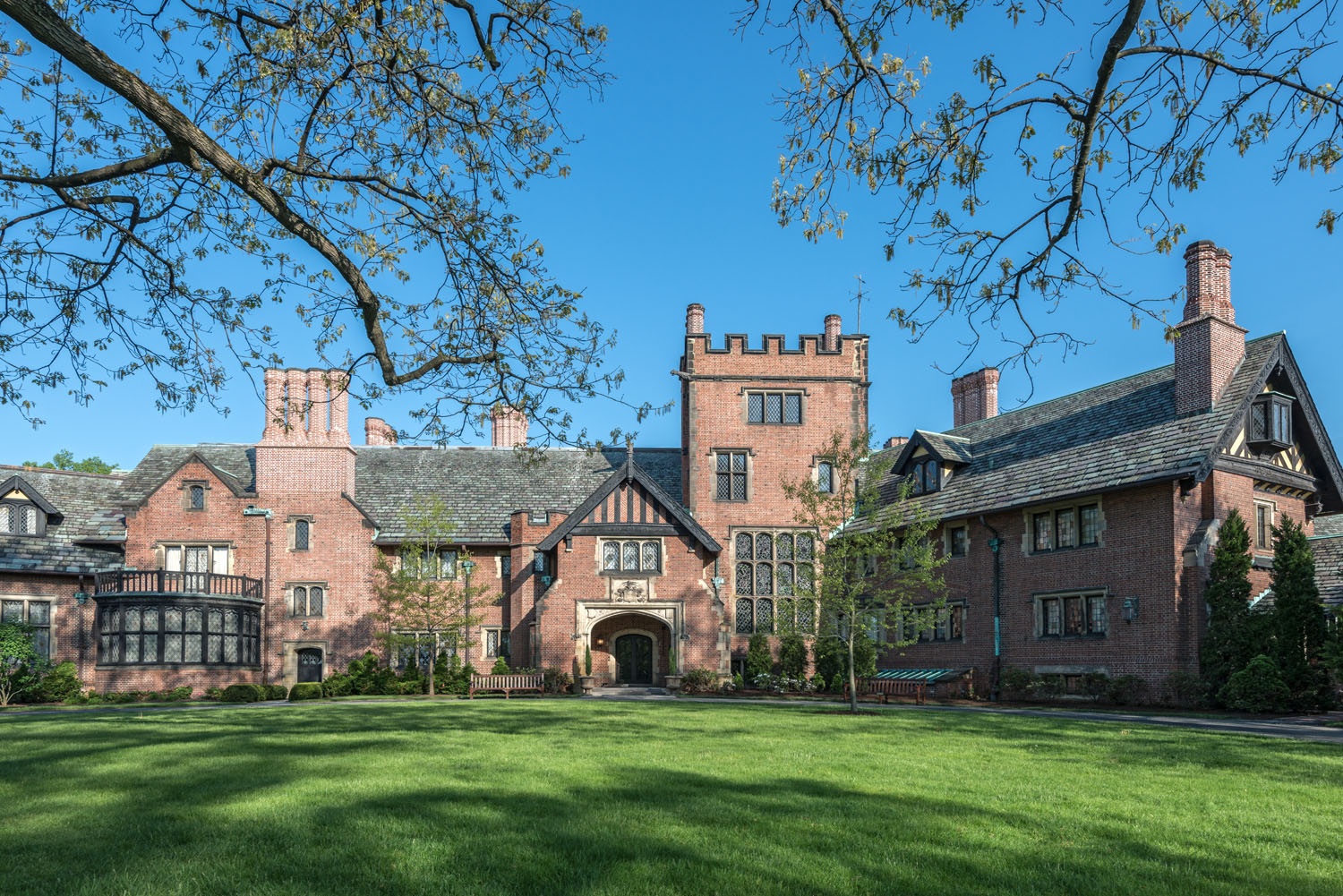This Garden in Akron, Ohio is Worthy of LeBron
F.A. Seiberling, the co-founder of the Goodyear Tire & Rubber Company, and his wife, Gertrude, always wanted their magnificent Tudor Revival estate, Stan Hywet, to be enjoyed by all. In fact, the credo by which they lived, Non Nobis Solum (which is Latin for “Not for Us Alone,”) is even engraved above the entryway of the Manor House they had built there in the early 1900s. In keeping with the couple’s philosophy of inclusiveness, their estate in Akron, Ohio—which in the 20th century was known as “the rubber capital of the world”—is open to the public year round.
Though the Stan Hywet estate originally encompassed 1,100 acres, it’s much smaller now—much of the land was donated to create the Cleveland Metroparks, a system of nature preserves that spans Greater Cleveland. But the space still includes over 70 acres of gardens, which were mostly designed and planted by Warren Manning, a disciple of Frederick Law Olmstead, the father of American landscape gardening, and one of the designers of NYC’s Central Park.
Manning spent years perfecting the grounds of Stan Hywet, which is old English for “stone quarry”—a fitting title considering the estate was built on the site of an abandoned farm that featured a quarry. Manning’s efforts paid off beautifully, and the result displays his amazing skill at blending nature and architecture while lovingly embracing and enhancing Stan Hywet’s natural setting in Akron.
It’s obvious from the moment you drive onto the grounds, as I recently did, that the Seiberling’s appreciated green spaces and wanted to make the most of theirs. (Gertrude was so serious about this that she studied horticulture, interior design, architecture, and gardening for 5 years when she learned her dream home would be built.) The Great Meadow– a broad sweep of grass that fronts the Manor House– lives up to its original name, the “living lawn.” It once served as an open area that the family of eight used for recreation and entertainment back in the day; today, it’s a place where concerts are held and vintage base ball (the historically correct spelling) is played.
And that’s all to say nothing of the flowers. You can’t escape botanical beauty anywhere at Stan Hywet (not that you’d want to, of course): The Manor House itself is surrounded on its North, South, and West sides by gardens. To the far North is the Great Garden, which covers three acres and features a beautiful Rose Garden, as well as a vast array of florals and foliage (snapdragons, sunflowers, lavender, coneflower, hydrangea, irises, and more were abloom during my visit).
The family appropriately called it “the secret garden” since, once in it, a person could practically disappear from the world.
Flanking the South Terrace and offering views of the Great Meadow is the formal London Plane Tree Allée, one of two alleys that act as natural extensions to the long central hallway of the Manor House. The 550-foot long Birch Tree Allée, located on the North side of the house and comprised of 100 gray birches, is lined with vinca and lily of the valley. The path creates an intimate covered walkway from the porch to the Tea Houses, a pair of garden pavilions that overlook the Lagoon and the site of a former sandstone quarry on the west side of the property. (Full disclosure: Like hundreds of other couples, my husband and I had our wedding photos taken at Stan Hywet, and our favorite was snapped at one of the Tea Houses.) The Seiberling’s used the Lagoon for outdoor activities like swimming and fishing; today the estate is the summer home of the Ohio Shakespeare Festival, wherein fans can enjoy the Bard’s plays under the stars. (On my visit, the company was rehearsing The Winter’s Tale, which runs until August 13, 2017.)
The Seiberling’s were quite the Anglophiles, so it makes sense that they’d have a formal English Garden. The natural slope of the back of the property provided what Gertrude saw as the ideal spot to place a sunken, walled garden. The family appropriately called it “the secret garden” since, once in it, a person could practically disappear from the world. It comprises all the characteristics of an English Garden: symmetry, a reflecting pond, and a statue at the far end. Worth the price of admission is the site of the richly-patinaed Garden of the Water Goddess statue that reigns over the garden. It also contains 112 varieties of perennials, annuals, and bulbs, and the perennials alone number over 3,300 (mostly shade-loving plants since the surrounding canopy of trees can block the sun). When planning a visit, keep in mind that the English Garden is designed to reach peaks of bloom in early and late summer—the times of year that the Seiberlings were in residence at Stan Hywet.
While the English Garden may have been Gertrude’s favorite of all the gardens, the Japanese Garden is also worthy of note. This Eastern-inspired facet of the garden uses natural and man-made features including a waterfall, streams, and even a miniature cement representation of Mt. Fuji to create a landscape of the Japanese countryside, which is truly a garden of tranquility. Fans of a wildflower garden will go wild (pun intended) for The Dell, a shady, naturalistic woodland garden. One of its special features is a stone underpass that allows you to walk from out to Great Meadow via the London Plane Tree Allée. The gardens and meadows all flow from one to another through interesting twists and turns (wear sturdy shoes as there are lots of steps and uneven terrain), and you could probably spend all day at Stan Hywet and only just begin to enjoy all of its beauty.
Visitors are welcome to tour the gardens (a self-guided tour is $12 for adults), but for those that have the time, the Manor House is worth the tour, too. (I highly recommend the Grand Estate Tour, which includes both the gardens and the house and takes about 2.5 hours; admission is $24 for adults.)
Though it was built to resemble a 15th-century English home, the Manor House is a spectacular example of state-of-the-art construction as it was in 1912. The opulent stone and steel home was built for comfort with modern plumbing and central heating; it features 65 rooms, 23 bathrooms, 18 bedrooms, 3 kitchens, 23 fireplaces, and an indoor pool (affectionately known as “The Plunge”). Not all are on the tour, as covering every square foot of a 64,500-square-foot mansion would exhaust even the most intrepid tourist. But visitors to Stan Hywet will be sufficiently wowed to see the 40 or so sites that are on view to the public, including the flower arranging room (the only room in the house that’s still used for its original purpose). All of the fresh and dried flower arrangements that decorate the Manor House are sourced from the Great Garden, so touring the house is a perfect way to see the garden’s splendor at the peak of the season, when its many beautiful colors are on display.







































